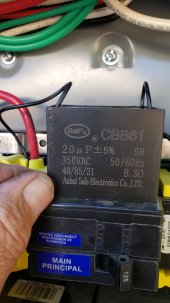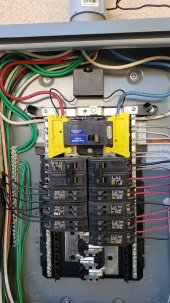Ok, so i'm getting that basic part of it. I just have this hesitation about unintended side-effects.. Such as, the capacitor is 'cycling' at the same 60hz as the circuit, but.. does it charge and discharge rapidly enough with the AC waveform that it does not introduce 'poor power factor' into the circuit by making current flow lag slightly from voltage? Or is it not an issue of 'speed' but just that the total energy is so low it's a drop in the bucket of the circuit and noone cares?
And, mainly the sizing. I like that someone has a 20uF number that 'works' but i'd like to 'get my head around it' conceptually before implementing it.. like i was saying if you installed a big enough capacitor on an AC circuit it would essentially just eat the peaks and feed them back into the valleys and 'short' the AC source down to an averaged out 0v while probably getting ridiculously hot and ruining the source equipment. I get that the 20uf isn't doing THAT, but is it doing SOMETHING bad and we just don't realize it? Where is that line? The massive 1 farad stereo caps just mentioned, might be in that zone, but i dont know?!
I just hate to do anything electrical until im already ~95% certain what's going to happen when i DO do it, and i don't feel like i understand this enough to try it, beyond just copying someone else's 'known good' where known good is basically nothing noticeable has gone wrong yet. And that's not a knock on Dyotat but sometimes when something seems too easy it's because there's something about it that I don't realize which is the reason it's not done all the time.
I do strongly, strongly suspect the big stereo caps have a low voltage rating, because you RARELY see large (like Farads, not mF not uF not nF) caps that also have a rating up into the hundreds of volts. I believe those type of caps are extremely expensive compared to what most hobbyists run across in normal home appliances and automotive circuits, etc.





